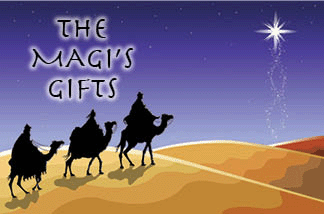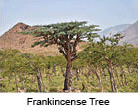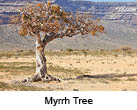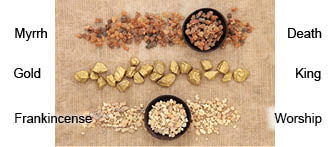Return to 4th Quarter 2020 articles.

And when they were come into the house, they saw the young child with Mary his mother, and fell down and worshipped him: and when they had opened their treasures, they presented him gifts; gold, and frankincense, and myrrh (Matthew 2:11).
There has been a great deal of confusion about the magi's visit to the Christ child. Not only are there differences of opinion about who the magi were, but even their gifts have been misunderstood. Atheists have claimed that the whole story is nonsense because Mary and Joseph could make so much money from these three items that Joseph would not have to work as a carpenter. We assume that whatever value the gifts had would have helped to support the family during their sojourn in Egypt.
At the time of Christ, these gifts were quite expensive. Today on Amazon, you can buy frankincense resin for $16 a pound and myrrh resin from $16 – 36 a pound. Gold, on the other hand, is selling for more than $1,800 an ounce. But the value of the magi's gifts was not primarily financial.

Frankincense and myrrh are resins extracted from wounds in the bark of trees that grow in northeast Africa and southern Arabia. Frankincense was used to soothe the gums and to treat respiratory problems, skin infections, and bruises. Modern researchers have found that frankincense has antiseptic, antifungal, and anti-inflammatory properties. It also contains flavonoids that cause the lungs' bronchia to dilate, helping with breathing problems. But frankincense was, and still is, burned in the worship of deity. For that reason, it seems to be an appropriate gift for the Christ child.

People used myrrh as an anesthetic. Soldiers gave Jesus “wine mingled with myrrh” during his crucifixion to relieve his suffering. He rejected the offering. Modern research has shown that myrrh can lower cholesterol levels, and it has been used to treat heart disease. A side effect of myrrh is that it stimulates the thyroid resulting in accelerated metabolism. Myrrh was used to embalm royal mummies like King Tutankhamen. The Jews also used it for embalming bodies for burial. The gift of myrrh hints at the death of Christ.
Even gold was valued for medical uses and not just business transactions. Roman doctors prescribed gold dissolved in acid to cure appendicitis. Today the drug auranofin is a gold salt listed by the World Health Organization to treat rheumatoid arthritis. But gold was and is associated with kings and crowns. This gift from the magi indicates a kingly future for Jesus.

The point of all this is that the expensive gifts of the magi had symbolic meaning. They were foreshadowing the death of Jesus, but also his deity and kingship. We know very little about the magi except that they came to worship the Christ child. Their gifts honored the one who was God in the flesh and who would eventually die to redeem all who would accept him as their King.
Picture credits:
© Eireann. Image from Big Stock.com
© Oleg Znamenskiy. Image from Big Stock.com
© zanskar. Image from Big Stock.com
© marilyna. Image from Big Stock.com
Scripture links/references are from BibleGateway.com. Unhighlighted scriptures can be looked up at their website.
